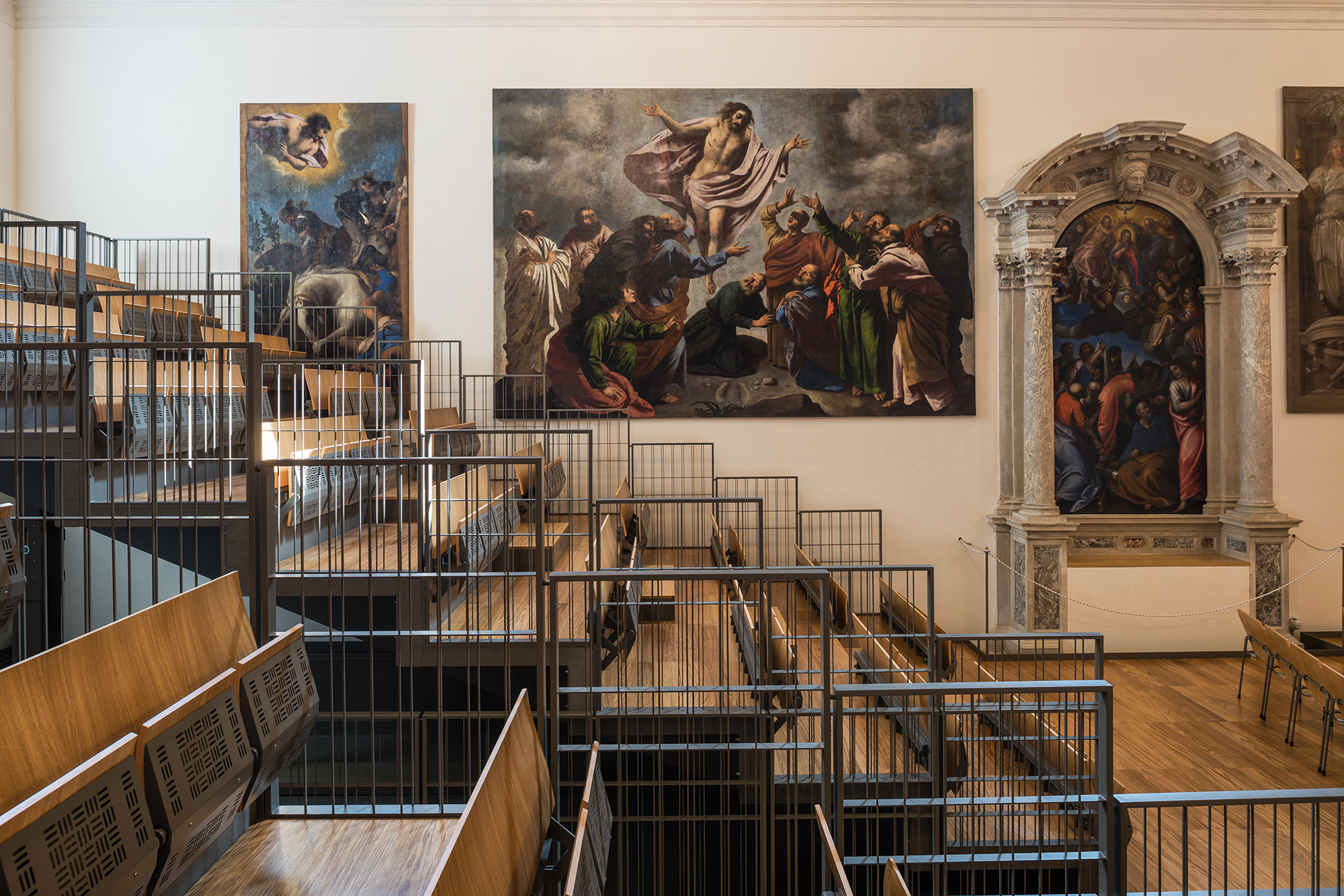In the collective imagination, a deconsecrated church often symbolizes abandonment or neglect. However, there are compelling examples in which such a space continues to serve as a place of gathering for the community through cultural initiatives.
This is the case of the Church of San Teonisto, built in the heart of the city of Treviso in 1434 as part of the convent of Santa Maria Assunta of Mogliano Veneto, once home to Benedictine nuns. Today, it is a cultural venue managed by the Benetton Foundation for Studies and Research.
The Church of San Teonisto is an exemplary case of the refunctionalization of a place of worship. Stripped of its traditional religious function due to historical events, it has now returned to being a gathering place for the community through the promotion of contemporary cultural projects.
Following a restoration project led by architect Tobia Scarpa, which began in 2014 and was completed in 2017, the church has been repurposed as a venue for music and cultural performances.
The restoration of the deconsecrated building, made possible by entrepreneur Luciano Benetton’s acquisition of the property in 2010, enabled the relocation of nearly all the original paintings, either lost or stolen during the Napoleonic era, or safeguarded at the Treviso Civic Museums during the wartime bombings of 1944.
These are large canvases originally commissioned by the Benedictine nuns from prominent painters of the time, such as Jacopo Lauro, Carletto Caliari, Matteo Ingoli, Bartolomeo Scaligero, Pietro della Vecchia, Ascanio Spineda, Alessandro Varotari (known as “Il Padovanino”), Matteo Ponzone, Paolo Veronese, and Antonio Fumiani.
Among these works are The Wedding at Cana by Paolo Veronese, now housed in Palazzo Montecitorio; the altarpiece by Palma il Giovane depicting the Martyrdom of Saint Theonistus; The Martyrdom of Saint Juliana by Carletto Caliari; and the large ceiling fresco by Jacopo Guarana portraying the Assumption of the Virgin.
Today, the Church of San Teonisto retains its original architecture, enriched with architectural elements recreated through a skilled restoration process. This includes the installation of hand-blown glass chandeliers and the construction of a retractable tiered seating system, allowing the space to function as a music hall, auditorium, or exhibition venue.The ceiling, rebuilt based on the original that collapsed during World War II, features a specially designed structure with metal beams and a wooden truss roof. At the entrance, accessed through a small internal courtyard designed as a foyer, stand four columns: three are topped with ancient Ionic capitals, while the fourth supports a screen-printed glass sculpture depicting the Dancing Maenad, a symbol of Treviso Cathedral and the institutional logo of the Benetton Foundation for Studies and Research.
This project, which has given new life to the church, stands as a valuable example of the repurposing of liturgical spaces, offering food for thought on the recovery of buildings that, for various reasons, have fallen into disuse and abandonment. The rediscovery of forgotten spaces is nothing new for the Benetton Foundation for Studies and Research. As early as April 2018, President Luciano Benetton opened the doors of the city’s former Austro-Hungarian prison, inaugurating the Imago Mundi exhibition space, a multidisciplinary venue dedicated to both established and emerging international artists.
